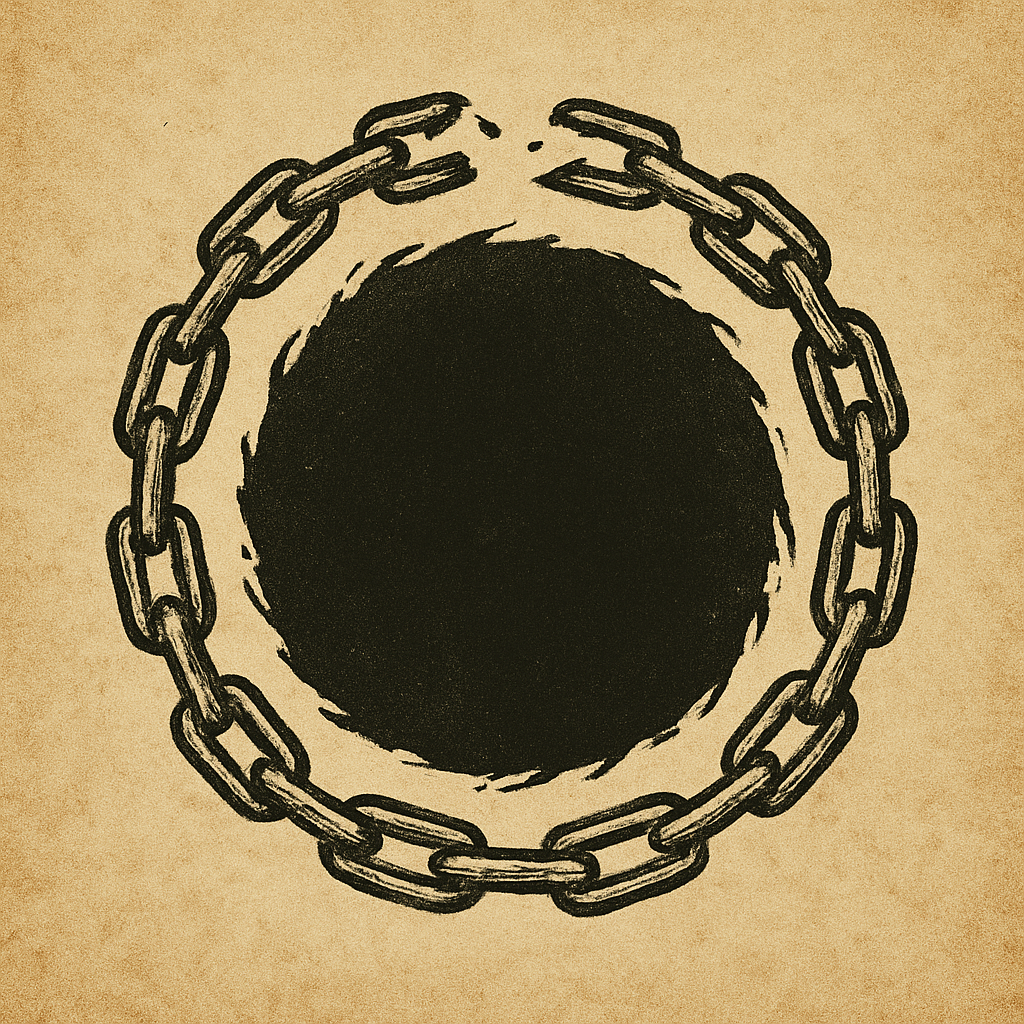Vohrmahz
God of Hunger
Description of the Church
The Church of Vohrmazh, called The Hollow Faith, is a bleak and minimalist sect devoted to emptiness, suppression, and spiritual hunger. Where others create, Vohrmazh devours. His temples are cold, bare, and soundless—designed to strip away magic, emotion, and illusion.
Worshippers believe that all power corrupts, that magic is inherently dangerous, and that desire is a flaw. Vohrmazh offers freedom from these lies. Silence is his voice, hunger his commandment. In surrendering to emptiness, one becomes untouchable.
Core Beliefs
- Hunger reveals truth, by removing false fullness.
- Magic is rot, a corruption of the natural cycle.
- Desire is suffering, and silence is clarity.
- Emptiness is power, when embraced fully.
- Creation must be balanced by erasure.
Religious Structure
Highly secretive and austere, with rigid ranks.
- The Mouthless One – An emaciated, masked leader who speaks only through visions or proxies.
- Nullpriests – Clergy who perform rites of unbinding and erasure.
- Wakers of the Hollow – Agents who extinguish magical artifacts and silence arcane sites.
- Ashmaskers – Executioners, exorcists, and ritual purifiers.
- Grey Initiates – Supplicants who undergo fasting, silence, and anti-magic immersion.
Rituals and Practices
- The Devouring Rite – A ceremonial unmaking of enchanted objects or spell-bound souls.
- The Silence Vigil – Days of mute isolation to purge desire.
- Ashfast – A ritual of starvation, used to invoke divine clarity.
- The Hollow Wake – A funeral rite without song, symbolizing surrender to nothingness.
Followers
- Mage-hunters and inquisitors, disillusioned with arcane excess.
- Ascetics, seeking to empty themselves of feeling and fear.
- Exiles and broken souls, who found no peace in other gods.
- Anti-magic zealots, crusading to purify the world.
Temples
Temples are bare, windowless, and often below ground. They are anti-sacred spaces, designed to nullify energy.
Features include:
- The Black Altar, upon which magic is devoured.
- The Pale Flame, a fire that gives no heat.
- The Mirrorless Hall, where no reflections are permitted.
Conflict and Controversy
- Hated by nearly every magical order, especially Rii-Ella’s and Marawae’s.
- Feared by Zedast and Sevast’s priests, whose natural flows Vohrmazh seeks to halt.
- Worshipped in secretive cells, persecuted in many cities.
- Debated among scholars: is Vohrmazh a god, or a vacuum mistaken for one?
Relationships with other gods
Central Architect: Vohrmazh was not sculpted like the others—he was what was left behind. Born from fear, exhaustion, and the terror that creation itself may be meaningless, he is the god of erasure. Some say he was imagined by those who had lost too much—faith, magic, beauty—and wanted not comfort, but silence. He is not just the absence of divinity; he is what remains after divinity is gone.
Relationship with Klavik (war, tyranny): Strategic alliance. Klavik conquers; Vohrmazh consumes. Together, they strip the world—one by dominance, the other by negation. In broken cities and purged lands, both are invoked—one in banners, one in silence.
Rivalry with Marawae (arts, beauty): Foundational. Vohrmazh is the antithesis of creation. Where Marawae inspires, Vohrmazh devours. He is the blank canvas that refuses paint, the string that snaps before the note. Their war is not fought with armies, but with meaning itself.

Symbol: A voided circle (solid black) with ragged, gnawing edges, encased in broken chains.
Meaning: Consumption, emptiness, and the breaking of false magic and desire.



Comments